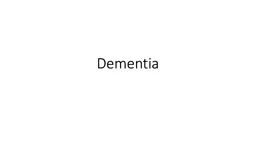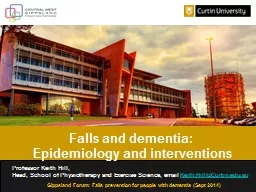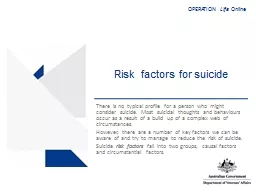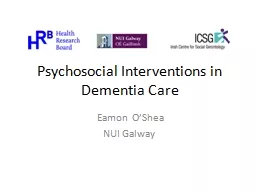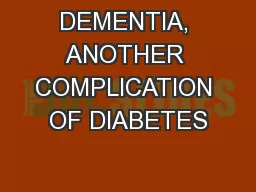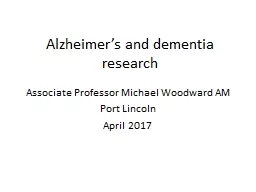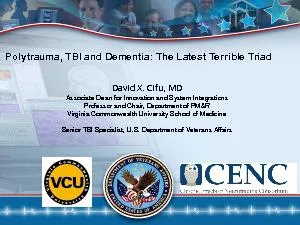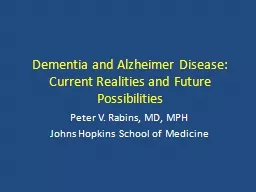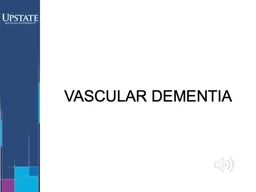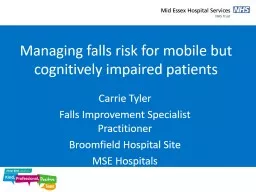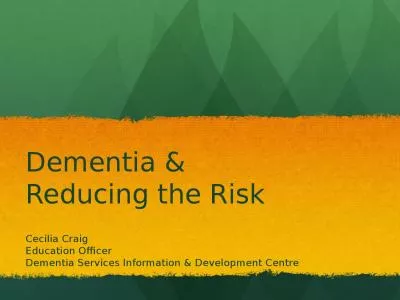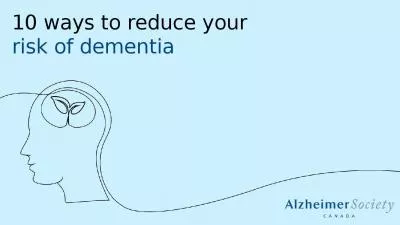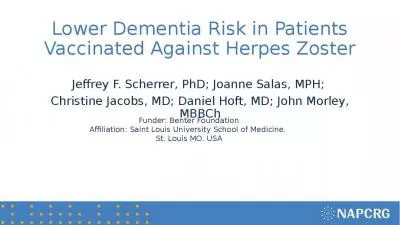PPT-Dementia Risk factors for dementia
Author : hadly | Published Date : 2022-06-07
Age greatest risk factor Vascular risk factors HTN DM CVD stroke smoking dyslipidemia Genetics apo E genotype late AD PSEN1 PSEN2 APP early AD Recurrent TBI or
Presentation Embed Code
Download Presentation
Download Presentation The PPT/PDF document "Dementia Risk factors for dementia" is the property of its rightful owner. Permission is granted to download and print the materials on this website for personal, non-commercial use only, and to display it on your personal computer provided you do not modify the materials and that you retain all copyright notices contained in the materials. By downloading content from our website, you accept the terms of this agreement.
Dementia Risk factors for dementia: Transcript
Download Rules Of Document
"Dementia Risk factors for dementia"The content belongs to its owner. You may download and print it for personal use, without modification, and keep all copyright notices. By downloading, you agree to these terms.
Related Documents

